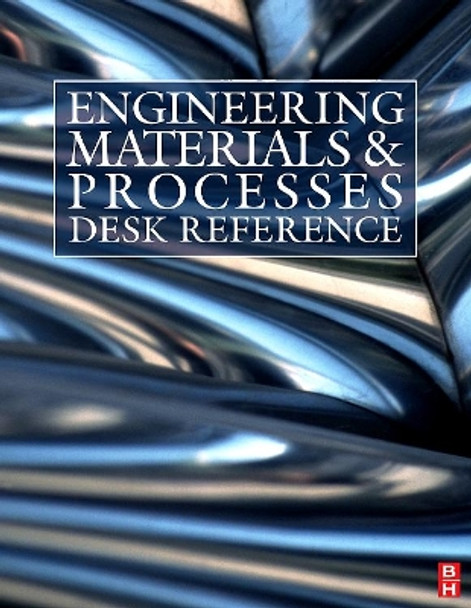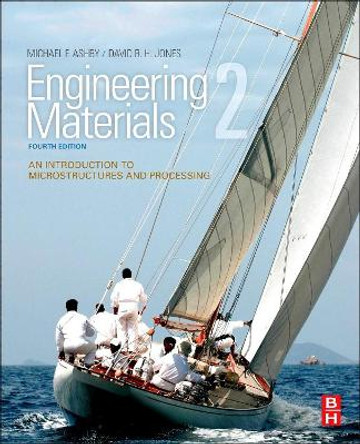Description
The go-to information source for materials science engineers: the latest information written by the leading experts
About the Author
Mike Ashby is one of the world's foremost authorities on materials selection. He is sole or lead author of several of Elsevier's top selling engineering textbooks, including Materials and Design: The Art and Science of Material Selection in Product Design, Materials Selection in Mechanical Design, Materials and the Environment, Materials and Sustainable Development, and Materials: Engineering, Science, Processing and Design. He is also co-author of the books Engineering Materials 1&2, and Nanomaterials, Nanotechnologies and Design. Rajiv Asthana, Ph.D., FASM, is Fulton and Edna Holtby Endowed Chair in manufacturing at the University of Wisconsin-Stout where he teaches in the manufacturing engineering program. He is Editor of Journal of Materials Engineering & Performance and on the editorial boards of Ceramics International and Materials Science and Engineering A. He has authored or coauthored five books, including Materials Science in Manufacturing (Elsevier) and 160 scientific publications, and co-edited Ceramic Integration and Joining Technologies (Wiley). His research interests include ceramic/metal joining, high-temperature capillarity and cast metal-matrix composites. Dr. Edward Furlani holds BS degrees in both physics and electrical engineering, and MS and PhD degrees in theoretical physics from the State University of New York at Buffalo. He is currently a research associate in the research laboratories of the Eastman Kodak Company, which he joined in 1982. He has worked in the area of applied magnetics for over 15 years. His research in this area has involved the design and development of numerous magnetic devices and processes. He has extensive experience in the analysis and simulation of a broad range of magnetic applications including rare-earth permanent magnet structures, magnetic drives and suspensions, magnetic circuits, magnetic brush subsystems in the electrophotographic process, magnetic and magneto-optic recording, high-gradient magnetic separation, and electromechanical devices such as transducers, actuators and motors. His current research activity is in the area of microsystems and involves the analysis and simulation of various micro-electromechanical systems (MEMS) including light modulators, microactuators and microfluidic components. Dr. Furlani has authored over 40 publications in scientific journals and holds over 100 US patents. After gaining his PhD in 1953, Professor Smallman spent five years at the Atomic Energy ResearchEstablishment at Harwell before returning to the University of Birmingham, where he became Professorof Physical Metallurgy in 1964 and Feeney Professor and Head of the Department of PhysicalMetallurgy and Science of Materials in 1969. He subsequently became Head of the amalgamatedDepartment of Metallurgy and Materials (1981), Dean of the Faculty of Science and Engineering, andthe first Dean of the newly created Engineering Faculty in 1985. For five years he wasVice-Principalof the University (1987-92).He has held visiting professorship appointments at the University of Stanford, Berkeley, Pennsylvania(USA), New SouthWales (Australia), Hong Kong and Cape Town, and has received HonoraryDoctorates from the University of Novi Sad (Yugoslavia), University ofWales and Cranfield University.His research work has been recognized by the award of the Sir George Beilby Gold Medal of theRoyal Institute of Chemistry and Institute of Metals (1969), the Rosenhain Medal of the Institute ofMetals for contributions to Physical Metallurgy (1972), the Platinum Medal, the premier medal ofthe Institute of Materials (1989), and the Acta Materialia Gold Medal (2004).Hewas elected a Fellowof the Royal Society (1986), a Fellowof the RoyalAcademy of Engineering(1990), a Foreign Associate of the United States National Academy of Engineering (2005), andappointed a Commander of the British Empire (CBE) in 1992. A former Council Member of theScience and Engineering Research Council, he has been Vice-President of the Institute of Materialsand President of the Federated European Materials Societies. Since retirement he has been academicconsultant for a number of institutions both in the UK and overseas. Professor Ngan obtained his PhD on electron microscopy of intermetallics in 1992 at the Universityof Birmingham, under the supervision of Professor Ray Smallman and Professor Ian Jones. He thencarried out postdoctoral research at Oxford University on materials simulations under the supervisionof Professor David Pettifor. In 1993, he returned to the University of Hong Kong as a Lecturer inMaterials Science and Solid Mechanics, at the Department of Mechanical Engineering. In 2003,he became Senior Lecturer and in 2006 Professor. His research interests include dislocation theory,electron microscopy of materials and, more recently, nanomechanics. He has published over 120refereed papers, mostly in international journals. He received a number of awards, including theWilliamson Prize (for being the top Engineering student in his undergraduate studies at the Universityof Hong Kong), Thomas Turner Research Prize (for the quality of his PhD thesis at the University ofBirmingham), Outstanding Young Researcher Award at the University of Hong Kong, and in 2007was awarded the Rosenhain Medal of the Institute of Materials, Minerals and Mining. He also heldvisiting professorship appointments at Nanjing University and the Central Iron and Steel ResearchInstitute in Beijing, and in 2003, he was also awarded the Universitas 21 Fellowship to visit theUniversity of Auckland. He is active in conference organization and journal editorial work. Roy J. Crawford was Vice Chancellor of the University of Waikato, New Zealand. Prior to this he was Pro Vice-Chancellor for Research at Queen's University Belfast in Northern Ireland, United Kingdom. At Queen's University, Professor. Crawford was responsible for establishing the Polymer Processing Research Centre which included the Research Group on rotational moulding of plastics, which he also founded. In 1998, he was elected as a Fellow of the Royal Academy of Engineering, and in 2005 was elected as a Fellow of the Society of Plastics Engineers. In the 2015 Queen's Birthday Honours, Prof. Crawford was appointed a Companion of the New Zealand Order of Merit, for services to tertiary education. Prof. Crawford sadly passed away in 2016. Nigel Mills was a Reader in Polymer Engineering in the School of Metallurgy and Materials at the University of Birmingham, UK. He was the author of the first three editions of Plastics: Microstructure and Engineering Applications, as well as the Polymer Foams Handbook, published in 2007.
Book Information
ISBN 9781856175869
Author Michael F. Ashby
Format Hardback
Page Count 552
Imprint Butterworth-Heinemann Ltd
Publisher Elsevier Science & Technology
Weight(grams) 1640g







